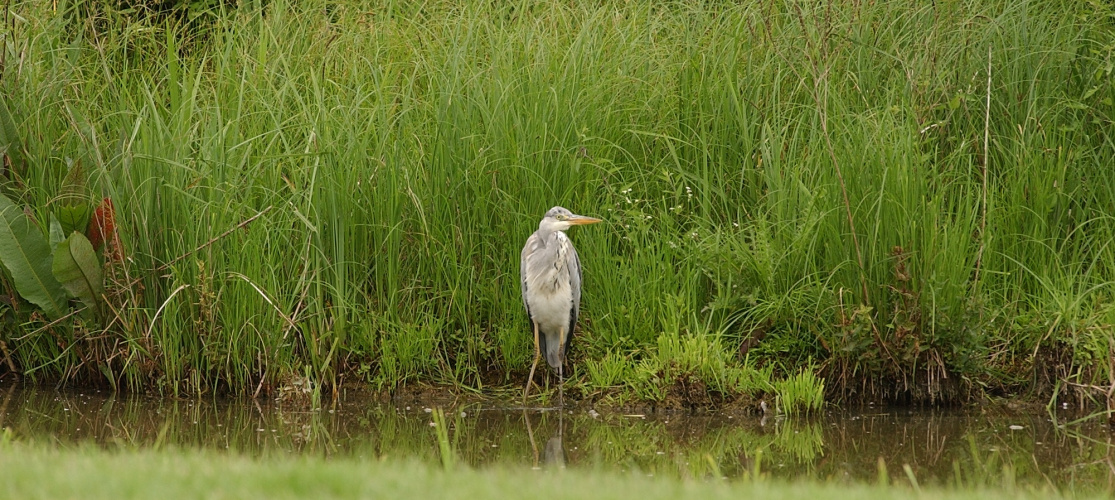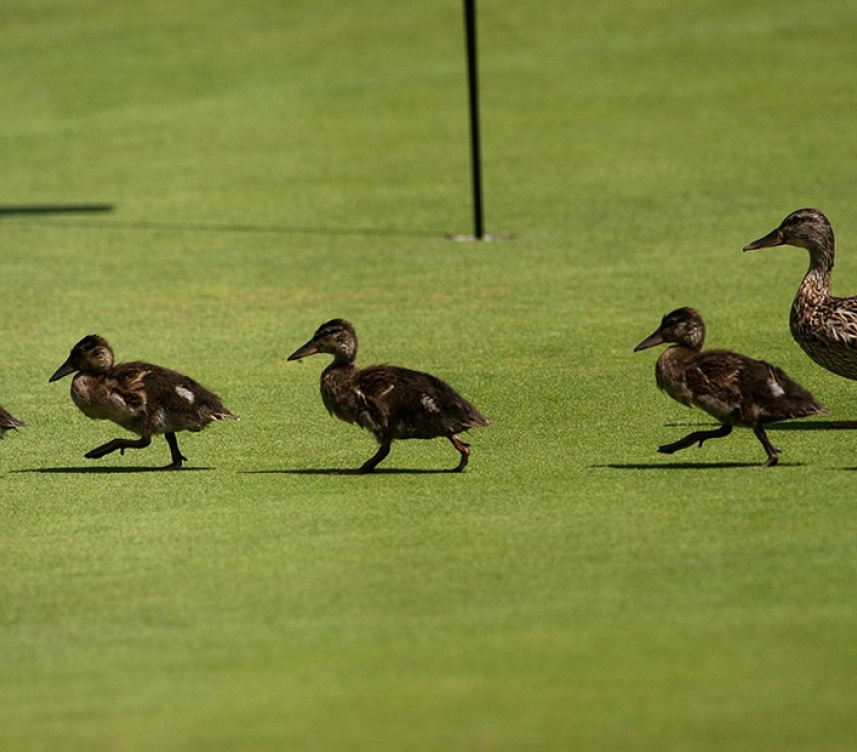

THE FFGOLF IS WORKING ON A NEW PROJECT TO RAISE AWARENESS ON BIODIVERSITY WITHIN GOLF COURSES
Mathurin Le Roux - mathurin.leroux@ffgolf.org
Located in the heart of nature, golf courses are part of a wide variety of environments: moors, meadows, forests, mountains... These natural environments are the beauty and strength of our sport and that is why their preservation is crucial. The French Golf Federation is fully committed to this topic.
Biodiversity, a wealth to be preserved
Nature conservation is an absolute necessity to limit and stop the decrease in biodiversity. It is the subject of a full strategy of the European Commission, the EU Biodiversity Strategy 2030 (https://www.eea.europa.eu/policy-documents/eu-biodiversity-strategy-for-2030-1), which aims to put biodiversity in Europe on the road to restoration by 2030, for the benefit of people, the climate and the planet. It is also a strong workstream of the R&A Golf Course 2030. The diversity of species and habitats are essential to the proper functioning of ecosystems, providing us with oxygen and food, and ensuring our survival in general. However, this objective cannot be achieved if no action is taken in terms of sustainable management by all relevant stakeholders. This is why the golf sector must take responsibility in this area.
The ffgolf project: a National Study Programme on biodiversity in golf courses
Aware that each of France's golf courses has a potentially rich but still little-known biodiversity, the French Golf Federation has been working with the National Museum of Natural History since 2007 on successive programmes. The latest one, started in 2015, is a National Programme for the Study of the Biodiversity of French Golf Courses of unprecedented scope. It is the result of the joint desire of the ffgolf and the Museum to extend their collaboration. The objectives of this National Study Programme are to build up the broadest possible knowledge base of the biodiversity of French golf courses, to assess their overall contribution and ecological interest in terms of natural heritage conservation, and to empower and support golf course managers to better match their biodiversity preservation challenges with their golf course management requirements.
**********
The example of the Golf de Vidauban
Located in a fantastic setting in the heart of Provence, the Vidauban golf course has been studying the species that live there for several years now, in collaboration with scientific experts. Thanks to these actions, it has acquired a better knowledge of its ecosystem and has been able to set up actions to preserve it. This example perfectly illustrates what the link between golf and the environment can and should be.
Find here (https://vimeo.com/401039021) the documentary made about this golf course (VO, english subtitles)
**********
Among the tools designed to achieve the objectives of the National Study Programme, an innovative club labelling system has been set up: the Golf for Biodiversity Programme.
It is based on a voluntary approach by clubs to continuously improve knowledge, preservation and development of their natural environment. To support them until they obtain a label, the committed clubs enlist the expertise of naturalistic players such as the major networks of associations working for the protection of the environment, specialised public bodies, independent experts, etc. The naturalist structures have the task of inventorying the various habitats, assessing the functioning and health of the golf course ecosystems, and recommending management and development measures to improve the biodiversity potential of the golf course studied.
The ffgolf's ambition for the Golf for Biodiversity Programme is to achieve excellence in the knowledge, preservation,development of golf courses' natural heritage and to educate golfers. To achieve this, the clubs will have to design an action plan to implement concrete management and development measures that are favourable to biodiversity. They will also have to communicate with golfers, staff, the media and local stakeholders, which may take the form of awareness-raising and training activities.
The next step: an international collaboration project
These experiences have strengthened the conviction that golf courses need to become actors in the protection of the wildlife they host. This is why the ffgolf would now like to broaden its actions, share its experience and open up to new initiatives by participating in an international collaborative project. Such a project would bring together European golf federations wishing to commit themselves to the protection of biodiversity and to exchange best practices in this field, as well as research institutes wishing to support these actions. By bringing together this expertise and studying a wide variety of environments, this project would provide a strong foundation for biodiversity conservation in golf courses across Europe. Moreover, it could be part of the R&A's Golf Course 2030 strategy and benefit from the support of EU funding programmes.
The European Golf Association and the French Golf Federation therefore invite federations interested in such a project to contact Mathurin Le Roux from the ffgolf at the following address: mathurin.leroux@ffgolf.org.
